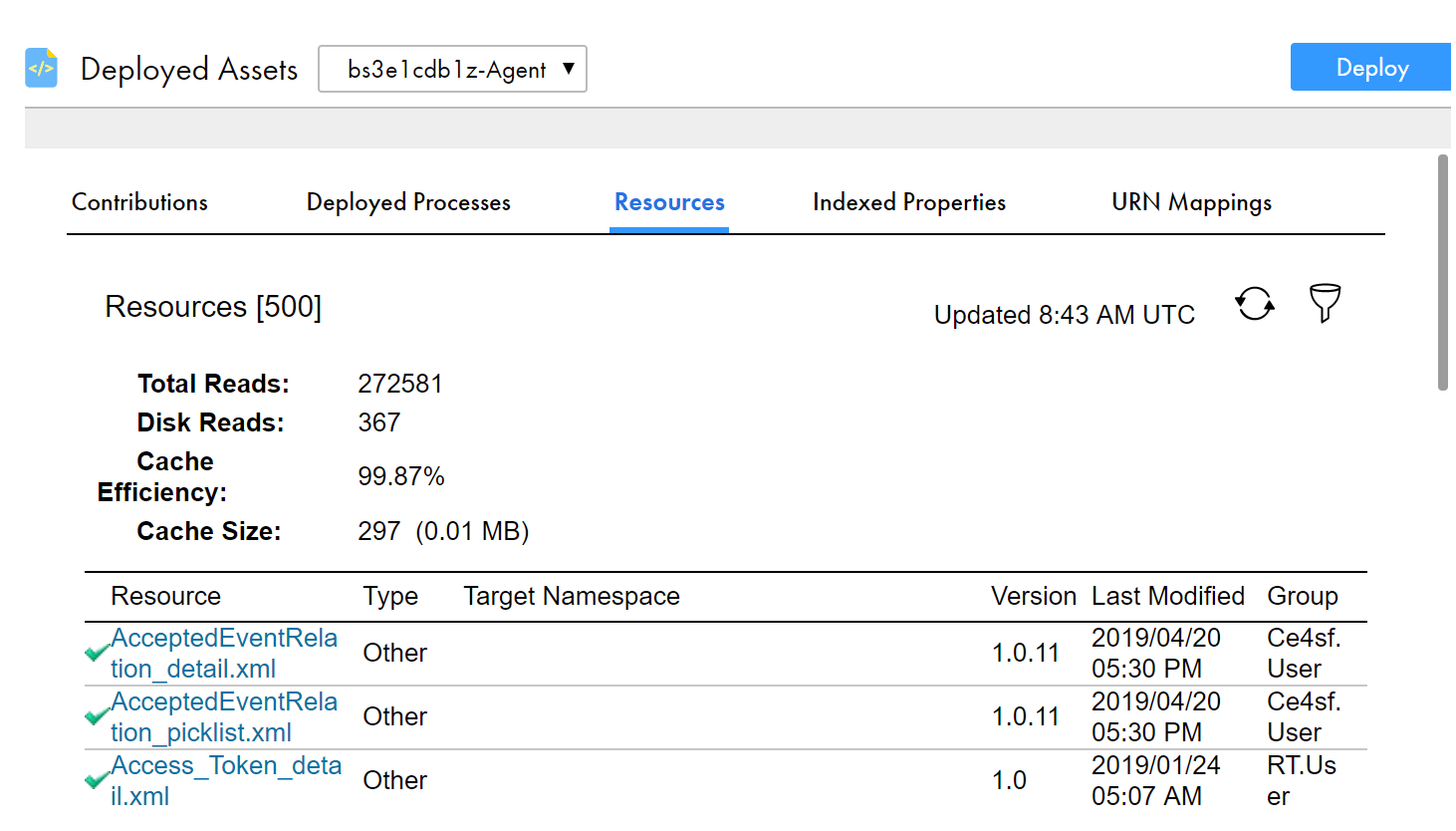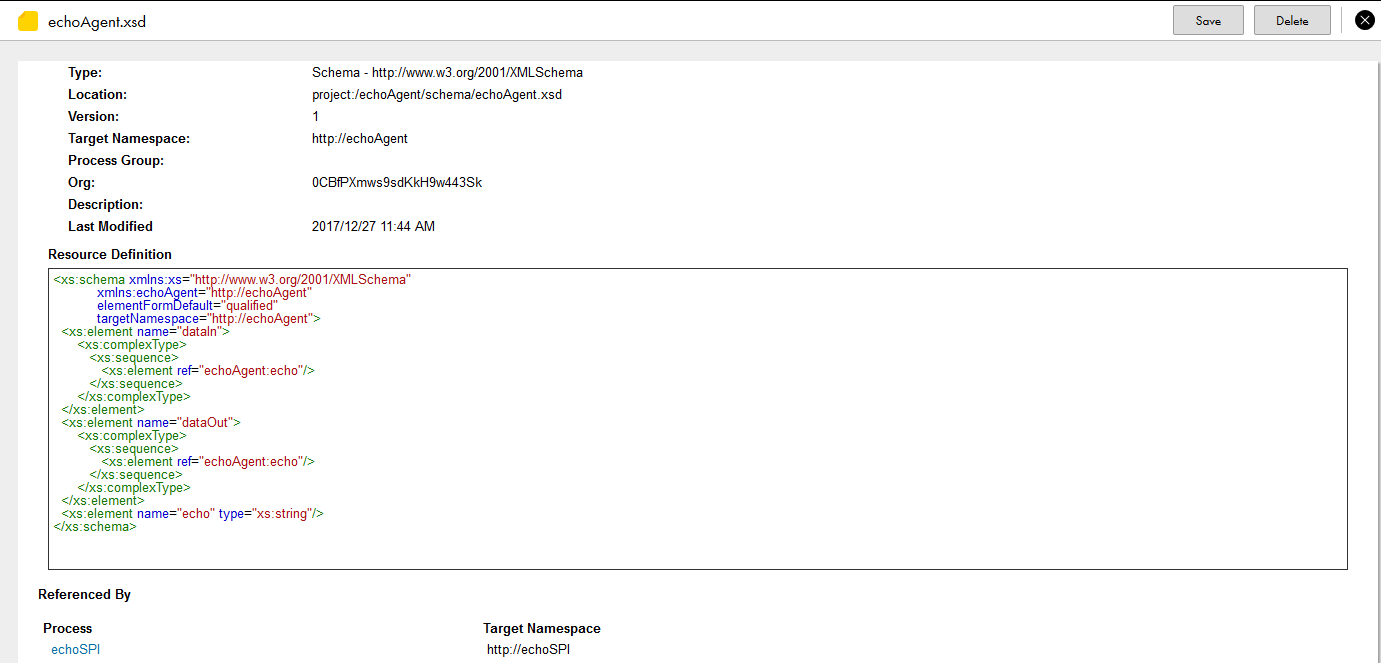
Resource Type | Description |
|---|---|
Central Configs (on-premises only) | Configuration files governing the display of folders and other filters for Process Central Tasks, Forms, and Reports. |
Function Contexts | POJO custom functions imported into processes. |
HTML Documents | Forms for initiating processes as well as task forms for People activities. Used in Process Central. |
Images | Image source files referenced in HTML pages. |
Java Jars (on-premises only) | Interfaces for partner services. |
Report Definitions (on-premises only) | System and user-defined reports. |
Schema Documents | XSDs imported into processes. |
WSDL Documents | WSDLs imported into processes. |
XQuery Modules | XQuery custom functions imported into processes. |
XSL Documents | Transformational style sheets for custom functions and the older Inbox application renderings. |
Others |
|

Item | Description |
|---|---|
Total Reads | The number of reads to retrieve resource information during process execution (in cache or not). |
Disk Reads | The number of reads made to resource files not in the cache expressed as an absolute number and percentage of Total Reads. |
Cache Efficiency | The percentage of resources that are read from memory versus read from storage. For example, 100% indicates that all resource reads are coming from the memory cache. |
Cache Size | The number of resource files in stored cache. The default is 100. You can set cache size on the Admin > Configure Server > Server Properties . Modifying the cache size may improve engine performance. |

Property | Description |
|---|---|
Name | The name of the resource |
Class | The class from which the resource was instantiated |
Location | The physical location from where the resource is loaded. This helps to uniquely define the location when the deployment descriptor was created and can be used to have multiple resource files of the same name deployed to the engine. The WSDL location is referenced in the.pdd file. |
Version | The version of the resource. This is either automatically created by the Process Server or assigned to in the.pdd file. |
Target Namespace | Target namespace in the resource |
Process Group | Group name that was added in the .pdd file; this is used to organize resources |
Description | Description that was added in the .pdd file |
Last Modified | The date at which this resource was last changed |